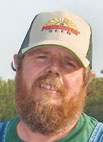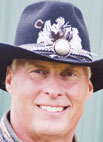
Dairy farmers have watched a volatile industry over the past decade and for those producers that have remained through stormy weather, adapting to change is how they have remained competitive. For Matt Byerley and his family farm – adapting – is the name of the game. Matt has taken over his family’s dairy at age 30 and says that it’s his progressiveness and his father’s knowledge of the business that has aided the farm in changing with the tide.
“We wanted to be efficient that’s what it comes down to,” said Matt. “To do that you’ve got to milk cows.”
Matt always wanted to take over his family’s dairy farm and turn it into a state of the art facility, but that came with hard work, working capital and lots of research.
The farm started in 1978 with milking 50 head of Holsteins, and today the dairy is milking 250 head with hopes to expand to 6-700 head in the future.
“We finished our new milking parlor about 2 years ago. Now, what it takes others to milk 50 head (typically 8 hours) we milk 300 (in 2 hours).”
The new system is a 36-rapid exit unit that milks 150 cows per hour. The stalls are 36- inch herringbone instead of the typical 44-inch, “doesn’t take up as much room,” he explained. “We milk from the side, not from behind. We tried it the old way in our old barn and it just didn’t work for us.”
In the dairy business today when so many producers are getting out, the Byerley farm is investing long-term with new buildings and farm infrastructure to enable the farm to be stabilized for the future.
Matt admitted for a family to enter the dairy business today it’s almost impossible with the high input costs. “With milking 50 cows there’s just not enough cash flow to go around. It’s just not a paying proposition. But, if you milk 300 – that’s a different story.”
Many dairies today have the most trouble with feeding costs, that’s where smaller dairies can’t keep up. “Your feed to milk ratio has to be there and it doesn’t matter if milk is $7 or $24. We buy commodity feed and everyone I know that has stayed in the business is turning to commodities.”
To tackle input costs Matt purchased a vertical mixer that grinds hay and feed together, saving time for him and his father to spend maintaining their herd.
Another addition within the last year to the dairy is a new flush system and lagoon that was completed this past fall which replaces mechanical scraping, adding extra time to be spent in other areas of the farm.
“Our time is valuable and we’ve learned that more time spent with our cattle equals better numbers on our bottomline,” Matt said.
Matt attributes a lot of their dairy success to being a member of the Young Cooperative Program through Dairy Farmers of America where his eyes were opened to a world of possibilities.
Matt said that the dairy business has changed and his family is following suit. He said that the future is uncertain on which direction the industry is headed, but he believes that his family’s farm will remain steady because of the farm generational gap that has been made between he and his father.
“Everything has fallen into place for our family and we feel very fortunate,” he said. “I’m lucky to be able to do this with my parents, wife and kids.”







